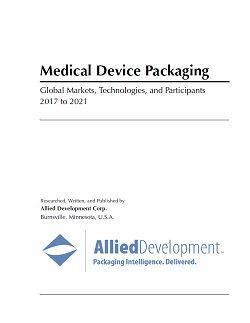Medical Plastic Market to See Continued Growth into 2030

According to a recent Emergen Research study, the medical plastic market size will continue to grow over the remainder of the decade. Reaching $44.84 Billion in 2021, new projections suggest that medical plastics will hit a market size of $85.54 Billion by 2030, which represents a compound annual growth rate (CAGR) of 7.5%.
The expanding demand for at-home healthcare and the rising elderly population are seen to be two main contributors to this expected growth, as the global population of people of 60 years old is on pace to increase from 12% to 22% by 2050, according to the World Health Organization (WHO).
Plastic packaging has been widely used in the medical field thanks to the material’s overall reliability and versatility. Modern plastics are able to take many shapes at a low cost, and they also offer shatterproof properties that improve the safety of transporting biohazardous goods and discarding medical waste.
Plastic is also resistant to corrosion and breakage, as the medical grade polymers can survive repeated sterilization. This is a trait that other materials, such as metal and glass, do not offer.
The flexibility of medical plastic has made it a leading material for various medical applications, especially in the wake of 3D printing development. Medical plastic is often used for prosthetic limbs, implants, and various devices thanks to its lightweight and resilient properties, and since the material is easily recyclable, medical professionals can ensure quality patient care while also practicing environmental stewardship.
Because most medical waste must be burnt due to contamination, medical plastics offer a solution because they can be repurposed into different medical applications, which closes the carbon cycle and reduces overall pollution.
With all the demonstrated benefits of medical plastics, it should be noted that they are not completely resistant to extreme temperatures, as heat can cause plastic to melt or deform, and cold can make the material brittle, making it more likely to shatter.
Still, the benefits of medical plastics far outweigh the costs, especially when considering the drawbacks of competing materials, and the industry will continue to expand as the material continues to offer high-performance qualities for a variety of medical products and packages.
Looking for a reprint of this article?
From high-res PDFs to custom plaques, order your copy today!







